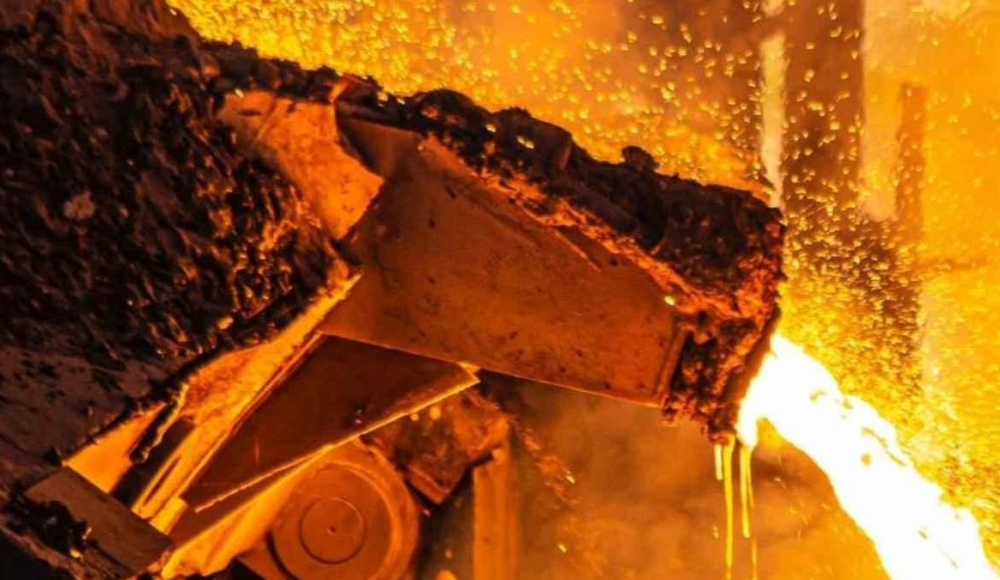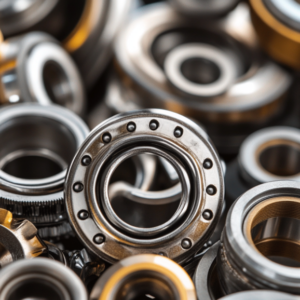Metals are widely used in different engineering processes. They can easily resist pressure, heat, and corrosion. This resilience is important for systems such as furnaces and jet engines. So, it’s quite important to know that melting temperatures of metals are useful in the selection of materials suitable for these conditions.
An Overview of Metal Melting Point
Simply, melting point is defined as the transition of metal from one phase to another, solid to liquid. At this stage, both solid form and liquid form can be seen together. When the temperature reaches a critical point, adding more heat increases the percentage of the liquid phase without increasing the temperature.
What Metals Have Medium Melting Points?
Medium melting point metals are iron, copper, and steel. These metals are used commonly in the construction and manufacturing of machines. During manufacturing, they can be shaped and formed based on their melting points. Copper, for instance, is characterized by very high electrical conductivity.
Does the Melting Point of a Metal Vary with Conditions?
In general, a metal’s melting point is invariant with the conditions unless subjected to extreme pressures. Nevertheless, this point can be greatly changed under high pressure.
Relationships Between Particle Size and Melting Point
The fusion behavior of metals in powder may also differ from solid metals. Also, the nanoparticles have a comparatively lower melting point than the bulk metallic phase which can be a disadvantage.
Influence of Impurities and Alloys
Some additives can be added to a metal to increase or decrease its melting point. However, most of the metals are characterized by a fixed melting point under ordinary circumstances.
Which Metal Has the Lowest Melting Point?
Metals with low melting points include mercury (-38.83°C), gallium (29.76°C), and cesium (28.5°C). These metals are highly sensitive, and can even melt at your palms. These metals are useful in specialized applications like soldering, thermometers, and electronic appliances.
Which Metal Has the Highest Melting Point?
Metals with high melting points are relatively more heat resistant than others. Among the highest melting temperatures, tungsten (W), 3,422°C, molybdenum (Mo), 2,623°C, rhenium (Re), 3,180°C, osmium (Os), 3,033°C, and tantalum (Ta), 3,017 °C, stand as ideal for their excellent ability to withstand high thermal conditions. These metals are commonly employed in the electronics and aerospace industries.
Melting Points of Common Metals and Alloys
Table: All metals melting points.
| Metal | Celsius (°C) | Fahrenheit (°F) | Kelvin (K) |
| Mercury | -39 | -38 | 234 |
| Phosphorus | 44 | 111 | 317 |
| Potassium | 63 | 145 | 336 |
| Sodium | 98 | 208 | 371 |
| Solder 50-50 | 215 | 419 | 488 |
| Selenium | 217 | 423 | 490 |
| Tin | 232 | 449 | 505 |
| Babbitt | 249 | 480 | 522 |
| Bismuth | 272 | 521 | 545 |
| Cadmium | 321 | 610 | 594 |
| Lead | 328 | 621 | 600 |
| Magnesium | 650 | 1200 | 922 |
| Magnesium Alloys | 349 – 649 | 660 – 1200 | 622 – 922 |
| Zinc | 420 | 787 | 693 |
| Aluminium | 660 | 1220 | 933 |
| Aluminium Alloys | 463 – 671 | 865 – 1240 | 736 – 944 |
| Aluminium Bronze | 600 – 655 | 1190 – 1215 | 916 – 930 |
| Yellow Brass | 905 – 932 | 1660 – 1710 | 1178 – 1205 |
| Bronze | 913 | 1675 | 1186 |
| Red Brass | 990 – 1025 | 1810 – 1880 | 1261 – 1300 |
| Copper | 1084 | 1983 | 1357 |
| Cast Iron | 1127 – 1204 | 2060 – 2200 | 1400 – 1478 |
| Carbon Steel | 1371 – 1593 | 2500 – 2800 | 1644 – 1811 |
| Nickel | 1453 | 2647 | 1726 |
| Wrought Iron | 1482 – 1593 | 2700 – 2900 | 1755 – 1866 |
| Stainless Steel | 1510 | 2750 | 1783 |
| Titanium | 1670 | 3040 | 1944 |
| Cobalt | 1495 | 2723 | 1768 |
| Palladium | 1555 | 2831 | 1828 |
| Thorium | 1750 | 3180 | 2022 |
| Platinum | 1770 | 3220 | 2044 |
| Zirconium | 1854 | 3369 | 2127 |
| Chromium | 1860 | 3380 | 2133 |
| Vanadium | 1900 | 3452 | 2173 |
| Rhodium | 1965 | 3569 | 2238 |
| Niobium (Columbium) | 2470 | 4473 | 2740 |
| Ruthenium | 2482 | 4500 | 2755 |
| Molybdenum | 2620 | 4750 | 2894 |
| Tantalum | 2980 | 5400 | 3255 |
| Osmium | 3025 | 5477 | 3298 |
| Rhenium | 3186 | 5767 | 3459 |
| Tungsten | 3400 | 6150 | 3672 |
| Gold (Au) | 1,064 | 1,947 | 1,337 |
| Iron (Fe) | 1,538 | 2,800 | 1,811 |
| Chromium (Cr) | 1,907 | 3,465 | 2,180 |
| Silver (Ag) | 961.8 | 1,763 | 1,235 |
| Pewter | 180-230 | 356-446 | 453-503 |
Tops Precision: Quality Metal Products
Searching for the highest quality metal products and accessories? Tops Precision presents exquisite metal products in different sizes and designs of the highest quality. We also offer easy access to metal cutting to make your purchasing process easier. Contact us now, or get an obligatory quote for your metalworking project!
Technical FAQs
Q1. What changes do you know pressure causes about the melting points?
Pressure increment affects a metal by increasing its melting point. Because atoms are crowded more closely together. The solid state seems to require more energy to break the bonds, that exist between the molecules or the atoms. Therefore, high pressure transforms the thermal properties of metals.
Q2. What makes the nanoparticles melt at lower temperatures?
Nanoparticles have a greater surface area to volume proportion. This unique structure results in changes in atomic bonding and atomic arrangement. Consequently, the energy needed to melt the mixture is reduced. These phenomena are important in the context of nanotechnology.
Q3. What is the impact of impurities on melting points?
Melting temperatures also can be decreased or increased by the presence of impurities. They distort the usual arrangement of atoms in the metal. Some components may be positively related to the degree of tie formation, whereas other components may be negatively associated with this process. This variability is critical in the design and processing of alloys.
Q4. What is the eutectic point?
The eutectic point is the lowest melting point that any alloy can possess. In this particular composition, the components of the blend soften at the same rate. Knowledge of the eutectic point is crucial while carrying out the casting and welding operations. It assists engineers in choosing the right materials for a given design.
Q5. Is it possible to change the melting points in manufacturing processes?
Yes, It is possible by alloying or by heat treatment processes. One can understand that various compositions can affect the melting characteristics. Heat treatment can influence the atomic structure. These methods allow for the development of specific materials for various uses.




4 thoughts on “Melting Points of Metals”